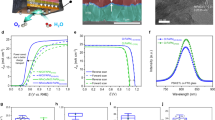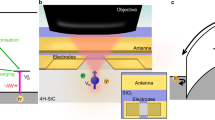Abstract
IN your issue of September 22 (vol. xxiv. p. 491, British Association Reports) Mr. Lant Carpenter mentions an idea of his about an “audible photometer.” The same idea occurred to me some six months ago. As my plan seems to be much more simple than Mr. Carpenter's, dispensing with intermitting beams and rotating disks, perhaps you will allow me a little space to describe it. I require only one photophonic receiver, whereas Mr. Carpenter mentions “two precisely similar receivers,” which is difficult, if not wholly impossible, to obtain. A is a small battery, B an induction-coil with the ordinary vibrating magnetic interrupter, and with a high-resistance secondary coil; c is the Wheatstonebridge combination, S E a selenium cell, with its working surface turned to the scale E; R is a high resistance of about the value of the selenium cell; a is a sliding contact, T a high-resistance telephone. Now I place on the scale E a standard candle at a distance d from selenium cell, and move the sliding contact till no sound is emitted from the telephone, Then the wire connections are left wholly unaltered, and the candle is taken away. Now I place the light I wish to compare with the standard candle on the scale E, and move it along the scale till the telephone is again silent. Be the distance of the light from the selenium cell now D, then its luminous intensity is
This is a preview of subscription content, access via your institution
Access options
Subscribe to this journal
Receive 51 print issues and online access
$199.00 per year
only $3.90 per issue
Buy this article
- Purchase on SpringerLink
- Instant access to full article PDF
Prices may be subject to local taxes which are calculated during checkout
Similar content being viewed by others
Author information
Authors and Affiliations
Rights and permissions
About this article
Cite this article
GILTAY, J. An Audible Photometer. Nature 25, 125 (1881). https://doi.org/10.1038/025125a0
Issue date:
DOI: https://doi.org/10.1038/025125a0



